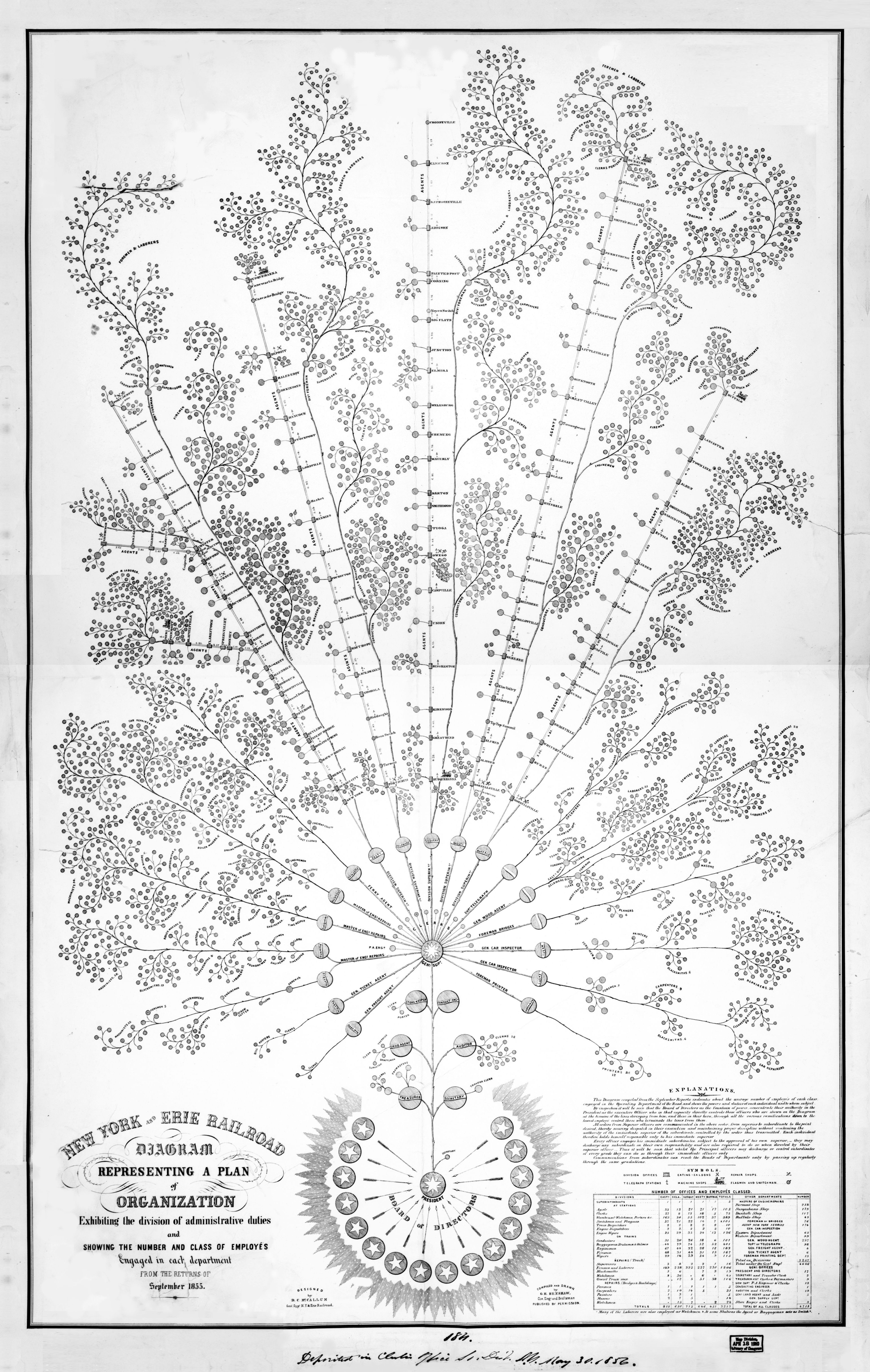In recent years, we have witnessed a seismic shift in expectations of management. Organizations and individuals alike are questioning the validity of hierarchical management structures, and for many, a new era of self-management is underway. The way we manage organizations seems increasingly out of date, as survey after survey shows that a majority of employees feel disengaged from their work - and from their companies. Self-management has been extolled by many academics and prolific leaders, yet it has also been subject to criticism and skepticism. This begs the question: is the concept of self-management and self-organized teams utopia or the real deal? In this article, I’ll examine the phenomenon of organizational self-management, and provide examples of organizations who have successfully implemented self-management and self-organized teams such as Morning Star, Buurtzorg, and Jaipur Rugs.
Being involved in the inception of Morning Star’s self-management system gave me hands-on experience with a fully self-organized company of up to 3500 employees - with no formal managers. From a first-hand perspective, I witnessed how self-management works - not only for laying the foundation of a fully flourishing organization - but also when it comes to engagement, happiness, and business performance.
Since Morning Star, I have devoted my career to teaching, writing and advising organizations on how to pursue organizational self-management. Self-management is not something that you just implement - then it works. You need to create shared learning experiences with people and give them resources and insights, as well as support structures, in order to fully harvest its fruits.
The Evolution of Management
In 1841 Train Wreck Management came to be when two passenger trains collided on the Western Railway, killing 2 and injuring 17. The railroad appointed Major George W. Whistler to lead the investigation. Borrowing ideas from the Prussian Army, Whistler’s committee recommended: the first top-down business org chart, central offices staffed by “managers” (using that term in business for the first time), chains of command, lines of reporting, and job descriptions. A prime directive was to identify “derelictions of duty” — in other words, to fix blame when things went wrong. This is a picture of the first ever (known of) organizational chart - and in fact, it looks beautiful:

The birth of the industrial revolution engendered a system of top-down management. As industries and organizations gained scale, a system of coordination was required to manage larger enterprises - and ‘’agents’’ - what we now call ‘’managers’’ were called upon to command. Management theories emphasized efficiency, lack of variation, consistency of production, and predictability. The goal was to optimize outputs, and this quote by Henry Ford clearly demonstrates how management at the time did not need people to think for themselves, rather just do the job they were told to do:
“Why is it that every time I ask for a pair of hands, they come with a brain attached?”
The second and third industrial revolution also led to huge leaps in our ability to produce at scale. What is needed today, however, is much more than “just a pair of hands”. We need people to think for themselves, and we need to organize ourselves in an entirely different manner. This is where self-management comes into the picture - let’s dig into this subject in the following.
What Is Self-Management?
At Morning Star, we based organizational self-management on two fundamental principles:
Principle 1: People should not use force against others; all interactions should be voluntary.
Principle 2: People should honor their commitments.
Simple as these principles may seem, the effectiveness of self-management lies in its simplicity, with complex managerial structures eliminated. As Dee Hock, founder and CEO of Visa, puts it:
“Simple, clear purpose and principles give rise to complex and intelligent behavior. Complex rules and regulations give rise to simple and stupid behavior.”
Organizations that implement self-management believe that top-down control does not yield the best results. Additionally, self-management theory suggests that the more hierarchical layers of management exist, the more disconnected employees become, as an increasingly limited number of people are responsible for key decisions - those of which impact the organization as a whole. Self-management puts the onus on everyone to understand the needs of the organization to the best of their ability, and how their own unique skill sets can best be leveraged to meet collective needs.
Frederic Laloux, author of Reinventing Organizations: A Guide to Creating Organizations Inspired by the Next Stage in Human Consciousness, describes organizations that operate without traditional hierarchy. However, in order to operate without hierarchy, there must be structures and processes in place to ensure that work is done effectively and efficiently. To operationalize effective self-responsibility, individuals should reflect on questions like the following:
- What is my personal mission?
- Why am I here?
- What does excellence look like in my role?
- How does what I do support my colleagues?
Without people being able to answer these fundamental questions, the effects of self-management at the organizational level will not manifest. The principles of self-management operate best within thoughtful boundaries and processes, which everyone understands and for which everyone receives training. Colleagues learn skills in conflict management, negotiation, delivering feedback, constructive communication, financial literacy, teaming, mentoring, facilitating, coaching and many other disciplines. Self-management comes with a high degree of responsibility, and thus also presumes a certain level of maturity for individuals working in self-organized teams.
What Is A Self-Managed Team?
Unlike traditional teams operating in a hierarchical organization, self-managed teams are agile. They do not rely on managers to control and oversee their tasks. Instead, they identify the work that needs to be done, prioritize tasks, and manage their own timelines. Effective collaboration is key, as self-managed team members communicate with each other to identify and complete work. Although guidance and mentorship exists to help guide teams in the right direction, there is no manager overlooking and/or micromanaging every single task. As a result, excess resources are not wasted on managerial tasks such as managing deadlines, checking employee statuses, and filling out timesheets (shrinking what Gary Hamel and Michele Zanini call the Management Tax). When employees are able to autonomously manage their own schedules and tasks, without the stress that micromanaging can create, they are more satisfied in the workplace with a higher level of motivation and engagement. Many academics and leaders are in favor of self-managing teams. For example, Wharton management professor Adam Cobb states:
Everyone takes part in the decisions, so it’s not being directed from above. The idea is that the people doing the actual work probably have a better sense of how to get it done than their bosses do. It’s a matter of distributing the expertise to where the expertise actually lies.
Self-Management At Morning Star – How Does It Work?
Morning Star is a California-based agribusiness and food processing company founded in 1970. The company has scaled and grown to become the global market leader in tomato processing. Morning Star was built upon the two fundamental principles of self-management, which we also touched upon in the beginning of this article:
(1) people should not use force against others; all interactions should be voluntary; and
(2) honor your commitments.
The company has no bosses, no titles and no structural hierarchy, and each colleague enters the enterprise with the same set of rights as any other colleague.
The principles that Morning Star uses are antithetical to traditional top-down business management structures in which a ‘command and control’ structure, based on the principles of force is exercised. At Morning Star, ‘command and control’ is replaced with ‘request and response’ in self-management, leading to natural leadership through respect and communication.
With the ‘honor your commitments’ principle, although it seems simple - if people don't honor the commitments they've made to each other, self-management is doomed to fail. At Morning Star, each colleague is accountable for their actions, their work, and how they manage their time. Continuous improvement is emphasized in this model, and professional colleagues (not employees) work towards clear goals.
“You cannot hold people responsible for results if you supervise their methods. You then become responsible for results and rules replace human judgment, creativity, and responsibility.”
- Stephen Covey
Changing Paradigms: What Other Companies Have Adopted Self-Management?
A number of companies have successfully implemented self-management and self-organized teams. As outlined in the Agile Manifesto, “The best architectures, requirements, and designs emerge from self-organizing teams.’’, and this is evident in the following companies' business structures.
Buurtzorg is a home-care nursing organization operating with self-management principles. Buurtzorg places ‘humanity over bureaucracy’, with 14,000 employees, 0 managers, and sky-high engagement. Founder Jos de Blok started Buurtzorg with a team of 4 nurses, and when the organization was just beginning to grow, they had an opportunity to design it fully to their own needs. Buurtzorg’s employees operate entirely with self-managing practices. Local teams of 10 to 12 nurses decide which patients to serve, how to allocate tasks, where to rent offices, how to integrate with the local communities, which doctors and pharmacies to work with, and how to collaborate with nearby hospitals. They monitor their own performance and take corrective action if productivity drops. Teams don’t have team leaders; management tasks are spread across the members, all of whom are nurses. At Buurtzorg, all new team members take a course called Solution-Driven Methods of Interaction, learning sophisticated listening and communication skills, techniques for running meetings and making decisions, and methods of coaching one another and providing perspective.
Jaipur Rugs is an entire global business built on the founder’s dream, Nand Kishore Chaudhary (known as NKC), of a self-managed future. Jaipur rugs employs 40,000 weavers making hand-knotted decorative rugs for sale in 40 countries, and the company is theorizing how to elevate the collaborative and decision-making powers of the workforce using the power of organizational self-management. NKC’s bottom-up strategy eliminates the exploitative middlemen who take profits out of the system and steer those profits directly to the amazing artisan weavers who create the art in the first place: the villagers from the ‘’untouchable’’ class who do the actual work. If self-management is about anything, it’s about respecting the voices of each and every member of an organization, which Jaipur Rugs does, through initiatives in education, literacy, coaching, mentoring, engagement–and organizational self-management.
Command-and-Control Management is Dying
It’s fair to say that command-and-control management is dying, and rightly so. Forbes has deemed this kind of management system as ‘’for dinosaurs’’, with its rules serving to infantilize, rather than to encourage employees:
- I'm the manager, so I make the rules.
- Your job is to do what I say.
- If you mess up, I'll let you know about it.
- If you don't hear from me, that means you're doing fine.
- You'd better be careful not to make a mistake, or cross me!
- Respect for the boss is the most important attribute you can demonstrate.
- I make the policies, and you follow them.
Do these ‘’rules’’ seem ridiculous and outdated? Well, they are. As well as having the potential to infantilize its employees, the overuse of management also comes with an exorbitant cost. We’ll explore this in the next section.
The Cost of Excess Management
Although companies need management, management has also become the least efficient and most-overused business activity. Therefore, is it imperative that companies minimize management and excess bureaucracy to become less obstructive. Gary Hamel and Michele Zanini estimate that an astonishing 3 trillion dollars per year is spent in the US on excess bureaucracy. The downsides of excess management are plentiful: Managers are expensive, can increase the risk of bad decisions, disenfranchise employees, and slow progress.
Most organizations put the power in the hands of a few highly paid executives - causing a great disconnect between the C-suite and the rest of the workforce and concretizing the original separation of management from actual value-creating work. Excess bureaucracy is more than a financial and economic cost, it’s a moral cost. The nonrenewable time of human beings is being misused and wasted.
Within self-organized teams, management is kept simple - within the fundamentals and boundaries of planning, organizing, hiring and controlling budgets. Rather than adding complex layers to these processes, self-management syndicates the work of management throughout an organization through the power of commitments, agreements and shared values.
Praise and Pushback for Self-Management
Self-management has proven to be a rather contentious topic, garnering both praise and pushback. In his book The Winner Effect: The Neuroscience of Success and Failure, Ian Robertson discusses the corruption of power, egregiously expressed in the massive destruction wrought by dopamine-disregulated dictators like Hitler and Pol Pot. In today’s society, we see lesser examples of this power dynamic - particularly in the C-suite, and plenty of leaders don’t want to relinquish the control they possess over their ‘’subordinates’’. Fear of giving up control and ‘’chaos’’ ensuing, is a major reason behind the opposition to self-management. This should, however, not be enough to enforce power over others for the sake of power dynamics. Although giving up power does not come naturally to many, leaders must find the courage in themselves to fight against unhealthy power dynamics, instead focusing on the fairness and respect that self-management elicits.
Another criticism that self-management has faced is the belief that employees are non-trustworthy, and - left to their own devices - they won’t possess the ability, nor the motivation, to fulfill their work obligations. Self-management defies this belief: if individuals can manage their own lives, they can also manage their own work - given the right conditions and training. Individuals make major life decisions such as choosing who to marry or to date, deciding where to live, which career or job to engage in, buying or renting property - the list goes on - and they make those decisions on their own (in most cases).This begs the question: if people can exercise control over their major life decisions, why can’t they manage their own work? Self-management allows for autonomy to take precedence over micromanagement, and with the right structures and training, people tend to thrive and flourish when given the opportunity to self-manage.
Conclusion
It’s important to make the distinction that self-management is not anti-management. An organization cannot function without any kind of structure or process, even if that structure consists solely of simple principles. In self-managed organizations, individuals exercise autonomy and control over their work. Similarly, self-management is not anti-leadership. Rather, it encourages natural leadership through respect and communication - instead of the traditional power structures of advancement and promotion. Through self-management, organizations can move towards a deeper sense of purpose, elicit improved engagement, autonomy, and ultimately, make for happier, more fulfilled human beings.
In today’s world, we see top-down power structures negatively influencing lives - we hear reports of certain organization’s post-pandemic return-to-office plans, in which workers are not included in decisions emanating from the C-suite. Ultimately, leaders need to include people, regardless of their ‘’rank’’ - in decisions if they want effective buy-in. In a post-pandemic world, we also see seismic shifts in how business is done, and how people work. Employees are increasingly vouching for more independence, less micromanagement, and more autonomy exercising where, when and how they work. Self-management recognizes and respects the individuality of every individual, rather than treating them as ‘cogs in a wheel’, whose sole purpose is productivity and profit. It’s time to evolve past archaic hierarchies of power, into a model of autonomy, respect, and collective responsibility.














